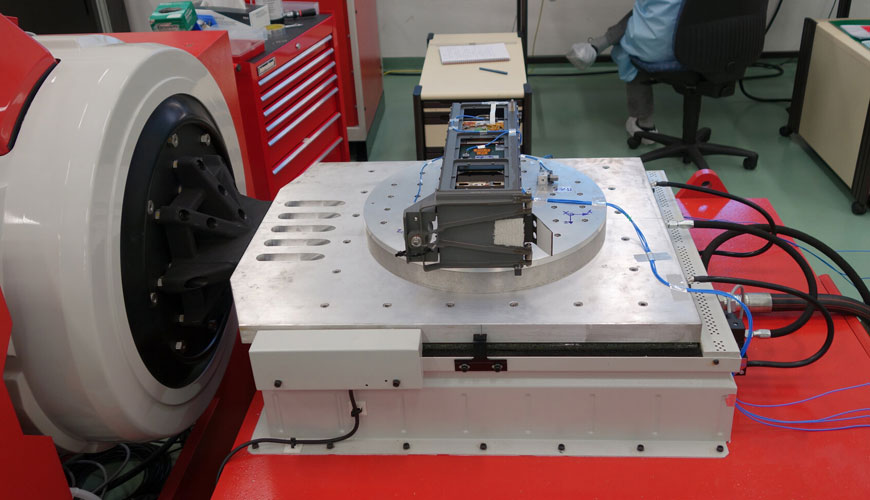

EUROLAB, with its state-of-the-art accredited laboratories and expert team, provides precise and fast testing services within the scope of EN ISO 6721-8 testing. This standard describes an ultrasonic wave propagation method for determining the storage components of the longitudinal complex modulus L* and shear complex modulus G* of polymers at discrete frequencies, typically in the range 0,5 MHz to 5 MHz.

The method is suitable for measuring materials with storage modules in the range of 0,01 GPa to 200 GPa and loss factors of less than 1 at about 0,1 MHz. Materials with higher loss introduce significant errors in velocity measurement through waveform distortion and can only be reduced using procedures outside the scope of this standard.
The method allows measurement on small samples, typically 50 mm × 20 mm × 5 mm, or on small areas of larger samples or plates. Therefore, it is possible to obtain information about the homogeneity or anisotropy of the modulus in a sample.
Measurements are made from the velocity of the longitudinal and transverse acoustic waves in a sample and the sample density. The frequency of the wave is chosen so that the wavelength in the sample is significantly less than the sample dimensions in a plane transverse to the direction of wave propagation. The wave then propagates as a bulk wave. The longitudinal and shear storage modules are given by the product of the material density and the square of the longitudinal and shear wave velocities, respectively.
This standard describes two methods for measuring wave velocities. In the immersion method, the sample captures a beam of longitudinal acoustic wave pulses passing between the transmitter and receiver transducer in a suitable liquid bath. At normal incidence, longitudinal wave pulses are excited in the sample. As the angle of incidence increases, the amplitude of the longitudinally refracted wave decreases and a refracted transverse (shear) wave is produced. The longitudinal and transverse wave velocities are derived from measurements of differences in pulse transit times with and without sample in the beam, and information about the velocity of sound in the liquid.
EUROLAB assists manufacturers with EN ISO 6721-8 test compliance. Our test experts, with their professional working mission and principles, provide you, our manufacturers and suppliers, the best service and controlled testing process in our laboratories. Thanks to these services, businesses receive more effective, high-performance and quality testing services and provide safe, fast and uninterrupted service to their customers.
To get an appointment, to get more detailed information or to request an evaluation, you can ask us to fill in our form and reach you.